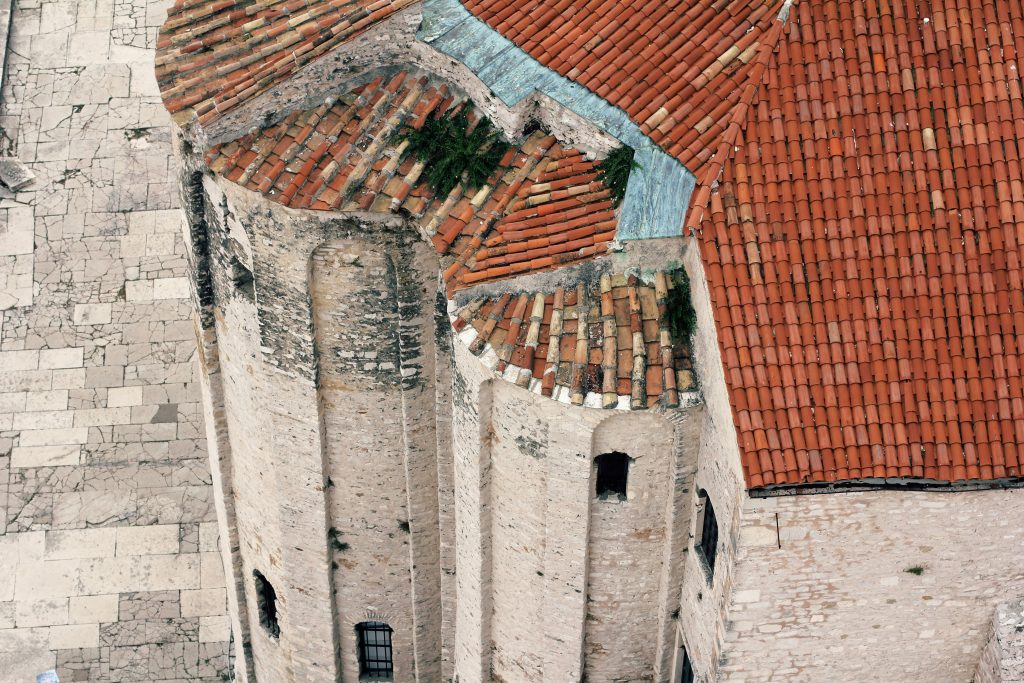February the 20th, 2024 – Climate change is affecting many things, and with temperatures hotting up, two Croatian cities in particular are likely to suffer the most.
As Poslovni Dnevnik writes, the concept of the heat island effect (UHI) is attracting the attention of the public thanks to a scientific study conducted by Mia Agapito. According to that, the Croatian cities of Zadar and Rijeka are among the five cities that will likely experience the fastest and highest increase in the number of days with a temperature above 20 degrees Celsius going forward.
A heat island is an urban area that is warmer than its surrounding rural areas, where the temperature is significantly higher, and the increase is caused by human influence. In Mia Agapito’s extensive work, the expected future heat load was examined, and a significant increase in average, maximum and minimum temperatures was observed in all analysed combinations of both regional and global climate models for all of the observed cities.
In the conditions of a warmer climate, the number of days with a maximum air temperature above 25 degrees Celsius increases across all of the observed Croatian cities, especially down south in Dubrovnik. The number of days with a minimum temperature above 20 degrees Celsius will also increase. It was also stated in the work that a decrease in the number of days with maximum and minimum temperatures below 0 degrees Celsius was observed across all Croatian cities, according to Novi list.
“In order to better understand the concept of urban heat islands, the mechanism behind the warming of our atmosphere should first be explained. The atmosphere heats up for the most part so that the Earth’s surface absorbs part of the solar radiation that reaches it, and then it begins to emit its thermal (long-wave) radiation. Atmospheric greenhouse gases play a very significant role in the warming up of the Earth’s atmosphere, which, by absorbing some radiation, help to warm the lower layers of the atmosphere.
The intensity of that heat increase also depends on the ratio of solar radiation that the surface absorbs and the part that the surface reflects. This relationship is expressed using a reflection coefficient called albedo. Lighter surfaces such as fresh snow or ice have a high albedo, which means that they reflect a large part of the sun’s radiation (even more than 90 percent) and absorb only a small part of it back. On the other hand, some natural surfaces such as meadows or forests have a low coefficient of 20 to 30 percent, meaning that they absorb 70 to 80 percent of the solar radiation.
Urban surfaces in particular stand out in terms of their low albedo, so, for example, asphalt has an albedo of only 15 percent, while cities as a whole have an albedo of about 10 to 20 percent, which means that cities absorb a greater amount of solar radiation than natural surfaces. So, we can say that the construction of cities disrupts the natural relationship between the absorption and reflection of solar radiation,” explained Robert Lončarić, a lecturer at the Department of Geography at the University of Zadar.
Given that the occurrence of heat islands is most pronounced in Croatian cities, judging by the aforementioned research, certain steps will need to be taken going forward in order to reduce the impact of this warming effect and stave off the unwanted consequences such as floods, fires and droughts. In addition, high temperatures very negatively affect human health and overall quality of life.
“We have more and more heat waves that are getting longer, starting earlier and ending later. The trend of rising temperatures is even more pronounced when we take into account the increase in construction in cities. If we look at the example of Zadar, in the last decade since this construction boom started, we can see that very few green areas are left. This will have to change in the future, and it seems to me that the city authorities are becoming more and more aware of the importance of green areas”, said Lončarić.
“This situation can’t be left to simply go on indefinitely for the simple reason that there will be many problems caused by climate change. In addition to the intensification of the heat island effect, there will also be more frequent urban floods due to the difficult drainage of rainwater because the natural circulation of water in Croatian cities is being disrupted. All of this reduces the quality of life, and ultimately reduces property prices. Therefore, by force of circumstances, the approach to the construction of new urban areas will have to be changed, and more attention will have to be paid to the planned construction of not only residential and commercial areas, but also green areas”, hopes Lončarić.
The concept of garden cities in urban planning has existed for years now, meaning that the planning the development of Croatian cities is important.
“The concept of so-called garden cities emerged in England at the turn of the 19th and 20th centuries as a response to the uncontrolled expansion and dehumanisation of industrial cities, which in the following decades, led to an increase in green areas in cities across the world. The concept of solving the problem of urban heat islands exists and is more than a century old, we just need to start applying it in practice in Croatian cities and not just pursue the construction of residential areas without paying attention to green areas”, Lončarić concluded.









